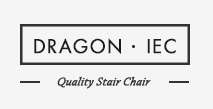The Usage of Oropharyngeal Airway
An oropharyngeal device for insertion into the mouth of a patient. The device includes a body having a distal end and a proximal end with
a flange formed at the proximal end. The distal end is inserted into the mouth until the flange is disposed outside and adjacent to the
patient's mouth. The flange keeps the proximal device from entering the mouth. The body is sized such that the distal end of the body is
disposed within the pharynx above the epiglottis. The device includes a channel that forms an airway between the ends. The device also
includes at least three separate conduits integrated into the body for administering oxygen, suctioning, and for assessing ventilation
thorough end-tidal carbon dioxide monitoring.
It is important to estimate the required size of an oropharyngeal airway. If it is too big it may occlude the patient's airway by displacing the
epiglottis (Skinner and Vincent, 1997), or it may hinder the use of a face mask and may damage laryngeal structures. If it is too small it may
occlude the airway by pushing the tongue back. A correctly sized airway is one that holds the tongue in the normal anatomical position and
follows its natural curvature. The curved body of the airway is designed to fit over the back of the tongue.
The OPA is measured against the patient's head (from the earlobe to the corner of the oral opening) and then inserted into the patient's mouth
upside down. Once contact is made with the back of the throat, the airway is rotated 180 degrees, allowing for easy insertion, and assuring
that the tongue is secured. Measuring is very important, as the flared ends of the airway must now rest securely against the oral opening in
order to remain secure. Use of an OPA does not remove the need for the recovery position and ongoing assessment of the airway and it does
not prevent obstruction by liquids (blood, saliva, food, cerebrospinal fluid) or the closing of the glottis. It can, however, facilitate ventilation during
CPR (cardiopulmonary resuscitation) and for persons with a large tongue.
The device also includes at least three separate conduits integrated into the body for administering oxygen, suctioning, and for assessing
ventilation through end-tidal carbon dioxide monitoring. The conduits for oxygenation and suctioning extend through the body between its
proximal and distal ends. The conduit for end-tidal carbon dioxide monitoring extends along and is attached to a side wall of the channel and
terminates within the channel.


